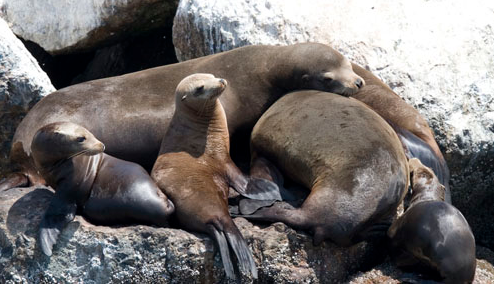A recently published study by scientists at The Marine Mammal Center used more than 20 years of data to identify factors associated with cancer in wild California sea lions (Zalophus californianus). Since 1979, between 18-23 percent of the adult sea lions admitted to the Center’s hospital have died of cancer which is among the highest cancer observed mammals world-wide. Based on examination of nearly 400 sick sea lions, researchers found that the occurrence of cancer was significantly higher in animals that had been exposed to persistent organic pollutants, such as DDT and PCBs, and that the odds of cancer increased with increasing pollutant concentrations in the animals’ blubber. The blubber levels of persistent organic pollutants in these California sea lions are amongst the highest recorded in any marine mammal. Another factor strongly-associated with a cancer diagnosis was infection with a herpes virus (Otarine herpesvirus-1). The authors note that synergism between pollutant exposure and viral infection in causing cancer has been suggested previously in humans but has not before been suggested or observed in wildlife.

California sea lions are common inhabitants in all four national marine sanctuaries along the California coast. Thousands breed on beaches in the Channel Islands not far from a recently discovered DDT dumping site. Many of the sick animals in this study were likely rescued from beaches in Monterey Bay, Greater Farallones and Cordell Bank sanctuaries. For more information about California sea lions, see the species profile in the SIMoN species database.